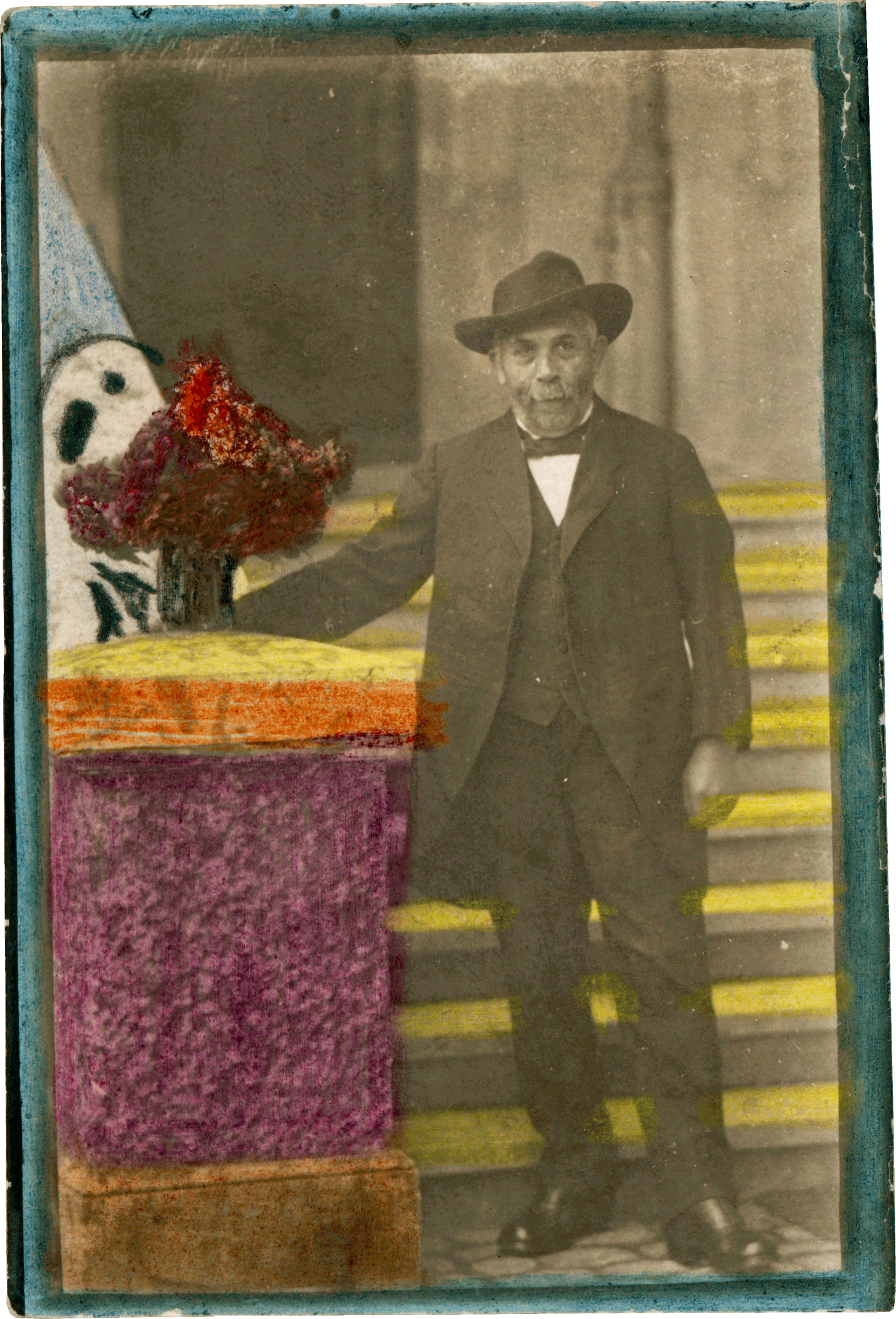Adolf Wölfli
(1864 - 1930)
- 1864: Adolf Wölfli is born on the 29th of February in Bowil, in the canton of Bern, Switzerland. He is the youngest of seven boys who grow up in poverty.
- 1870-1872: His father, Jakob Wölfli, a stonemason who suffers from alcoholism, abandons the family. His mother, born Anna Feutz, earns a living as a laundress. In 1872, Wölfli and his mother are granted indigent assistance and relocated by the authorities of Bern to their hometown of Schangnau. They are placed separately with peasants to work there.
- 1873-1879: His mother dies of illness while he is nine years old. As an orphan, Wölfli is successively placed with different farming families, where he is forced to work in degrading conditions.
- 1880-1890: Wölfli works as a farm hand labourer in the cantons of Bern and Neuchâtel. He attends the Swiss military recruit school at Lucerne in 1883-1884. A first love affair fails due to his poverty, which upsets him profoundly. Other disappointments follow.
- 1890: Wölfli is sentenced to two years’ imprisonment for attempted rape of a fourteen-year-old and a five-year-old girl. After his detention, his isolation and solitude increase.
- 1895: He is arrested again for the attempted rape of a three-and-a-half-year-old girl. Diagnosed with schizophrenia (“paranoid dementia”), he is committed to the Waldau psychiatric hospital near Bern, where he will stay until his death. On 12 June, upon request of his doctors, he edits his Kurze Lebensbeschreibung (Short Autobiography) of a dozen pages.
- 1899: At the Waldau, Wölfli sinks into illness, giving in to his hallucinations and impulsions. He begins to draw at the age of 35.
- 1904-1906: The earliest surviving drawings date from this period: around fifty large format works in graphite, produced for lack of funds. The series comprises between 200 and 300 sheets.
- 1907: Doctor and psychiatrist Walter Morgenthaler, who works at the Waldau intermittently until 1919, reports that Wölfli, restless and inclined to violence, regains his composure when given chewing tobacco and pencils. He also explains that the artist-composer would spend hours playing melodies invented with a paper trumpet. The first colour works date from this period.
- 1908-1912: Wölfli writes a great epic of over 3,000 pages, in which he depicts himself leaving Switzerland to conquer space. It is a veritable cosmogony, entitled Von der Wiege bis zum Graab. Oder, Durch arbeiten und schwitzen, leiden und Drangsal, bettend zum Fluch (From the Cradle to the Grave. Or, through work and sweat, toil and tribulation, imploring malediction). Colour pencil drawings illustrate the text.
- 1912-1916: Writing of Geographischen und allgebräischen Hefte (Geographic and algebraic notebooks), of around 3,000 pages, in which Wölfli depicts the birth and glorious future of his oversized empire called the “Giant=Creation of St. Adolf”. Musical staves and endless lists of calculations accompany the text. From 1916, he signs St. Adolf II.
- 1916: Wölfli begins producing Brotkunst (bread art), drawings on loose pages intended for sale. Psychiatrists (Walter Morgenthaler, Oscar Forel, Jacob Wyrsch), Waldau employees and artists build up small collections of these brightly coloured drawings, each with an Erklärung (explanation) on the reverse.
- 1917-1922: Compilation of the Hefte mit Liedern und Tänzen (Notebooks of songs and dances) some 7,000 pages long, in which the Komponist (composer) celebrates his “Giant=Creation” in solmisation.
- 1921: Walter Morgenthaler publishes Ein Geisteskranker als Künstler ((A Mental Patient as Artist), the first monograph devoted to Wölfli’s life and work. It is also the first book in which an interned patient is referred to by name, in order to assert the prevalence of his status as artist. On this occasion, drawings are exhibited for the first time in bookshops in Bern, Basel, and Zurich.
- 1922: Heidelberg psychiatrist and collector Hans Prinzhorn publishes Bildnerei der Geisteskranken (Expressions of Madness), in which a drawing by Wölfli is analysed. Widely circulated in avant-garde literary and artistic circles, this work changed the way artists and society viewed l’art des fous (madmen’s art).
- 1924-1928: Production of Allbumm-hefte Tänzen und Märschen (Album-notebooks of dances and marches), approximately 5,000 pages long. Wölfli continues to praise his world with musical compositions and “sound poems”.
- 1928-1930: Development of the Trauer-Marsch (Funeral March), an unfinished requiem of almost 8,000 pages of “sound pictures”.
- 1930: Adolf Wölfli dies of cancer on 6 November. His work, over 25,000 pages in various formats (most of them hand-bound in 45 thick notebooks), includes graphic compositions, literary and poetic creations, collages, and musical scores. At the Waldau, he also decorated the ceiling of his bedroom, drew on a folding screen, and glued his drawings to several pieces of furniture.
- 1945: French artist, theorist and collector Jean Dubuffet discovers Wölfli’s work during a trip to Switzerland, where he coins the oxymoron “art brut” (outsider art). Wölfli’s work had been gradually forgotten since his death. Dubuffet begins a correspondence with Morgenthaler with the idea of translating Ein Geisteskranker als Künstler – a project which only comes into fruition in 1964.
- 1948: the first Compagnie de l’Art Brut exhibition is devoted to Wölfli, thanks to the loan of 120 drawings from the Waldau. Dubuffet subsequently acquires several drawings. In his eyes, the work and the artist became the most representative case of what he calls “art brut” – singular art produced by self-taught artists outside the usual art circuits.
- 1950: Wölfli’s drawings are shown at the Exposition internationale d’art psychopathologique (International Exhibition of Psychopathological Art) in Paris, which brings together 2,000 works from 45 collections and is visited by close to 10,000 people.
- 1963: Swiss curator Harald Szeemann presents Wölfli’s works at the Kunsthalle Bern as part of a landmark exhibition, Bildnerei der Geisteskranken – a reference to Prinzhorn’s book.
- 1967: Art Brut, the first major exhibition from Dubuffet’s collection held at the Musée des Arts Décoratifs in Paris, helps to raise awareness of the concept and category, as well as of Wölfli.
- 1972: Harald Szeemann presents Wölfli’s work alongside contemporary art at the Documenta 5 of Kassel. In so doing, he sought to abolish the barriers between high art and outsider art, and to substitute the notion of “individual mythology” for the concept of “art brut”. Roger Cardinal’s Outsider Art is published in London, diffusing the concept in the Anglo-Saxon world.
- 1975: Creation of the Adolf Wölfli Foundation at the Museum of Fine Art in Bern, dedicated to the conservation, study, and diffusion of the thousands of works in its care.
- 1976: Opening of the Collection de l’Art Brut in Lausanne, directed by Michel Thévoz, which presents Dubuffet’s collection and gives Wölfli’s work a high profile. Since then, his work has been exhibited in institutions in many countries, including the American Folk Art Museum in New York and the Station Gallery in Tokyo.
Portrait d’Adolf Wölfli

Date
sans date
Medium
Photography
Technique
Silver, black and white
Place of conservation
Collection de l'Art Brut
Credits
Photographe non identifié
Kurze Lebensbeschreibung

Première page de la courte autobiographie rédigée par Wölfli à la demande des psychiatres à son arrivée à l'hôpital de la Waldau, en 1895.
Author
Adolf Wölfli
Date
1895
Medium
Manuscript
Format
35,4 x 45,3 cm
Place of conservation
Adolf Wölfli Stiftung
Cote
A 1985.230
Credits
Adolf Wölfli Stiftung, Kunstmuseum Bern
Reference
Courte autobiographie, p. 1
sans titre
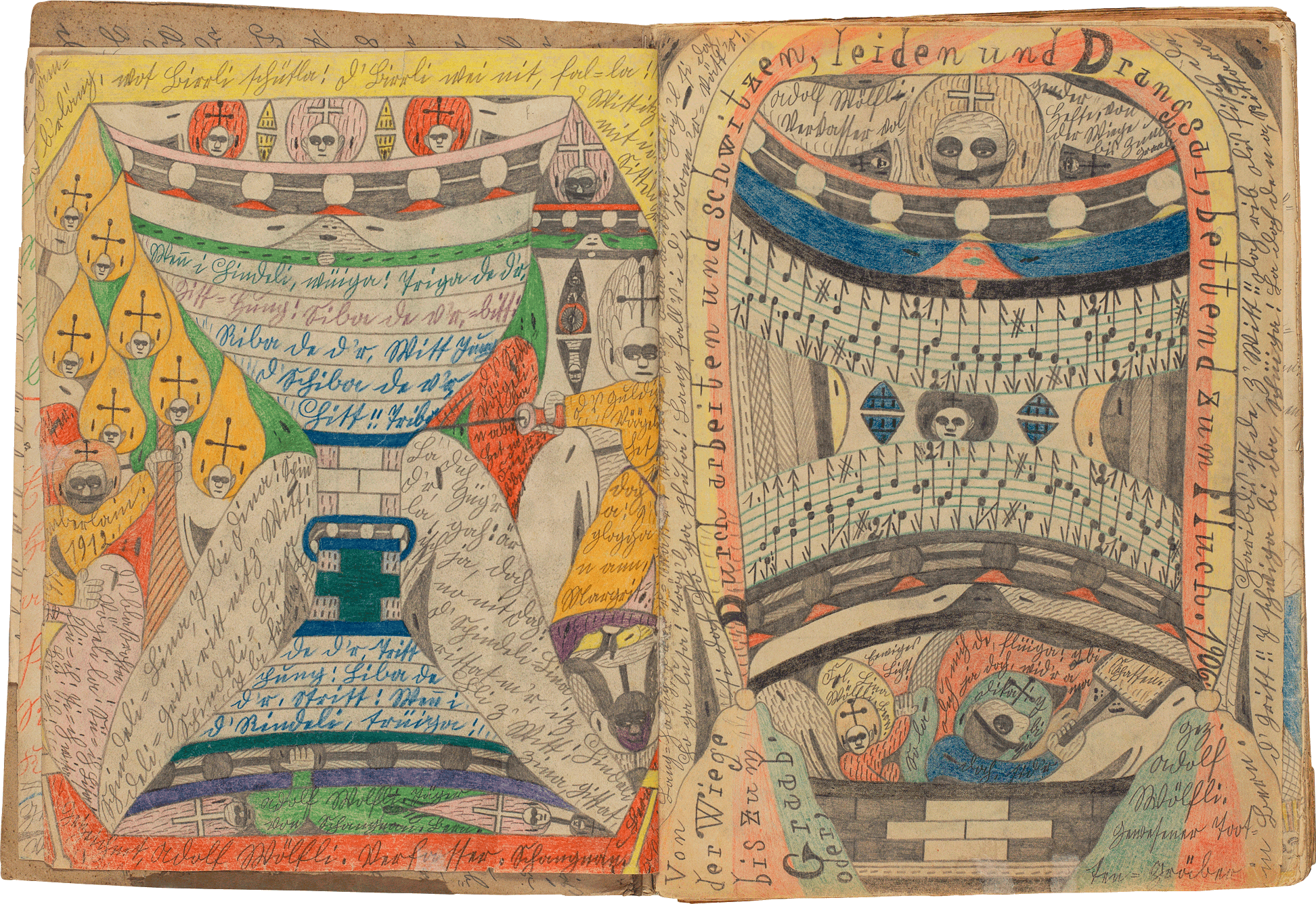
La page de droite contient le titre de l'autofiction d'Adolf Wölfli Von der Wiege bis zum Graab… (Du Berceau au tombeau...).
Author
Adolf Wölfli
Date
entre 1908 et 1912
Medium
Drawing
Technique
Graphite pencil and coloured pencil on paper
Place of conservation
Adolf Wölfli Stiftung
Cote
A 9238
Credits
Adolf Wölfli Stiftung, Kunstmuseum Bern
Reference
Du Berceau au tombeau..., cahier n°1, p. f-g
Felsenau, Bern
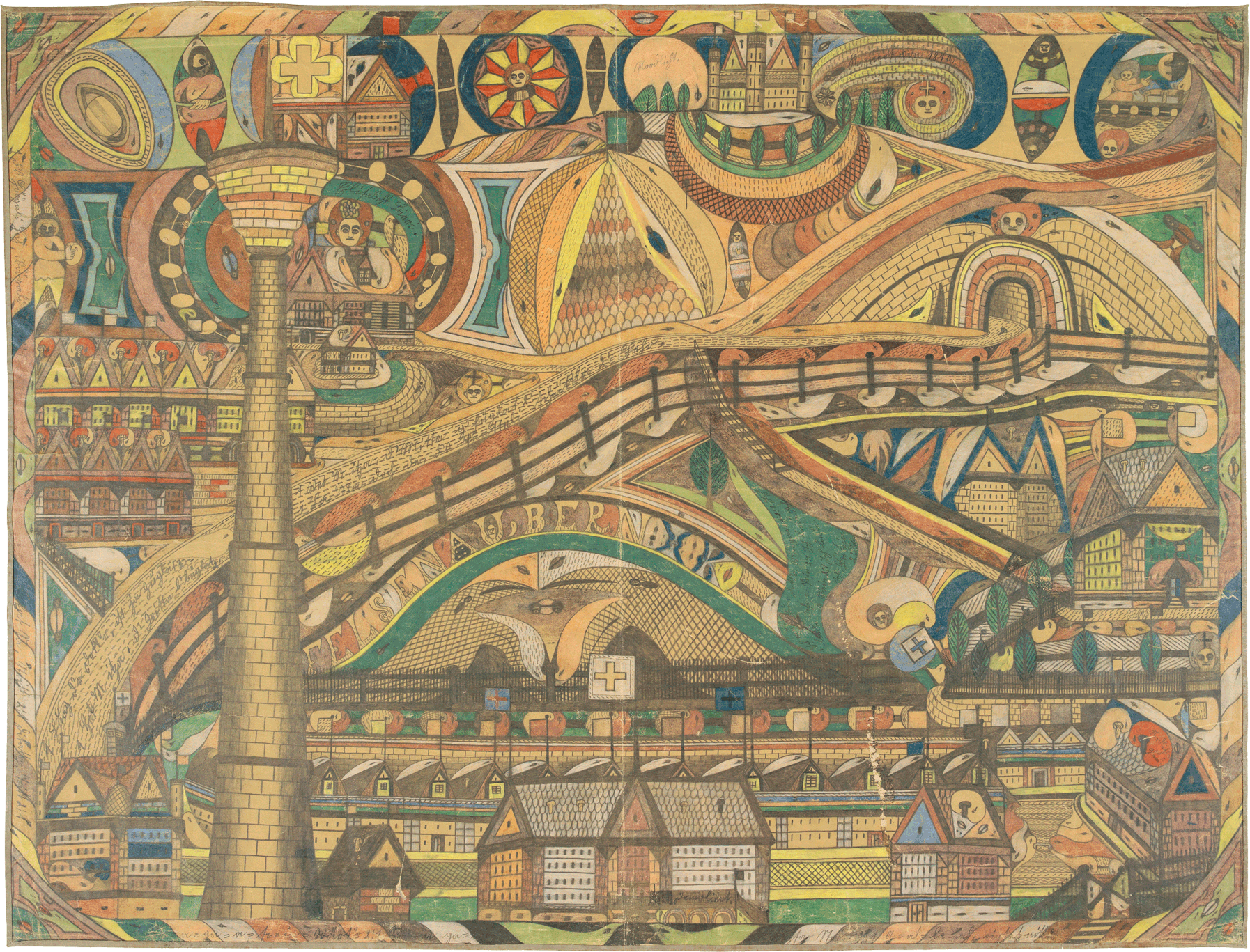
Wölfli représente les usines de Felsenau, dans les environs de Berne, par une immense cheminée et une enfilade de toits, telles qu’on pouvait les apercevoir à la suite de l’industrialisation de la région au XIXe siècle. Le tunnel qui conduit aux fabriques correspond également à la réalité tandis que la clôture entourant la route, les drapeaux sur les maisons ou encore les arbres ont été ajoutés par l’auteur.
Author
Adolf Wölfli
Date
1907
Medium
Drawing
Technique
Graphite pencil and coloured pencil on paper
Format
74,3 x 99,3 cm
Place of conservation
Adolf Wölfli Stiftung
Cote
A 8997
Credits
Adolf Wölfli Stiftung, Kunstmuseum Bern
Cahier géographique et algébrique n°14 (ouvert)

Author
Adolf Wölfli
Date
1912-1916
Medium
Notebook
Technique
Graphite pencil, kraft paper and hand binding
Place of conservation
Adolf Wölfli Stiftung
Cote
A 9263
Credits
Adolf Wölfli Stiftung, Kunstmuseum Bern
Reference
Cahier géographique et algébrique, n°14, p. 178-181
Ein Geisteskranker als Künstler
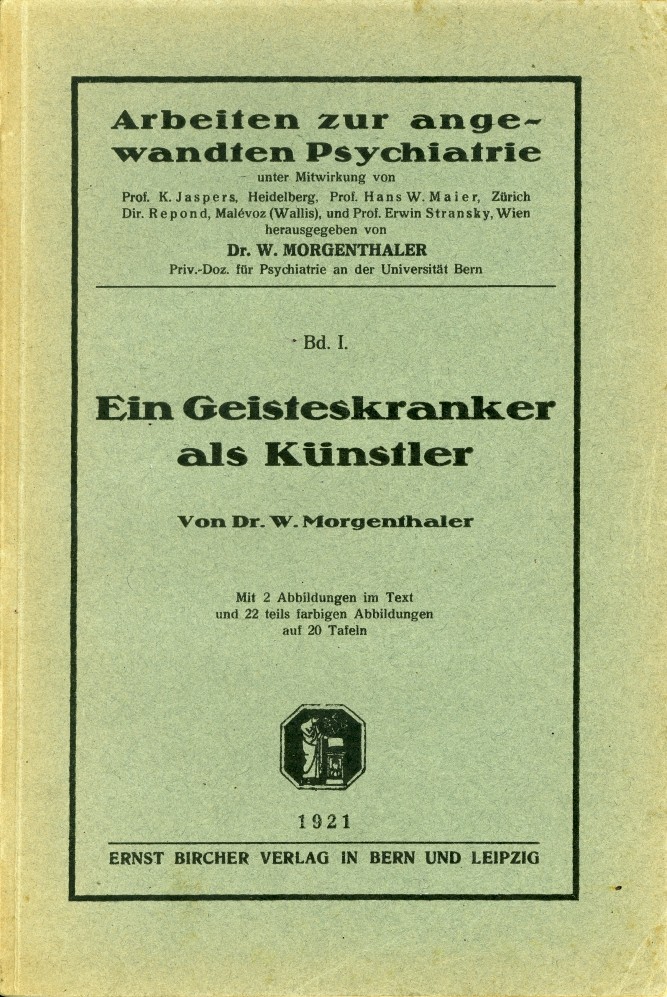
Author
Walter Morgenthaler
Date
1921
Medium
Essay
Reference
Ernst Bircher, Berne / Leipzig
Bildnerei der Geisteskranken. Ein Beitrag zur Psychologie und Psychopathologie der Gestaltung
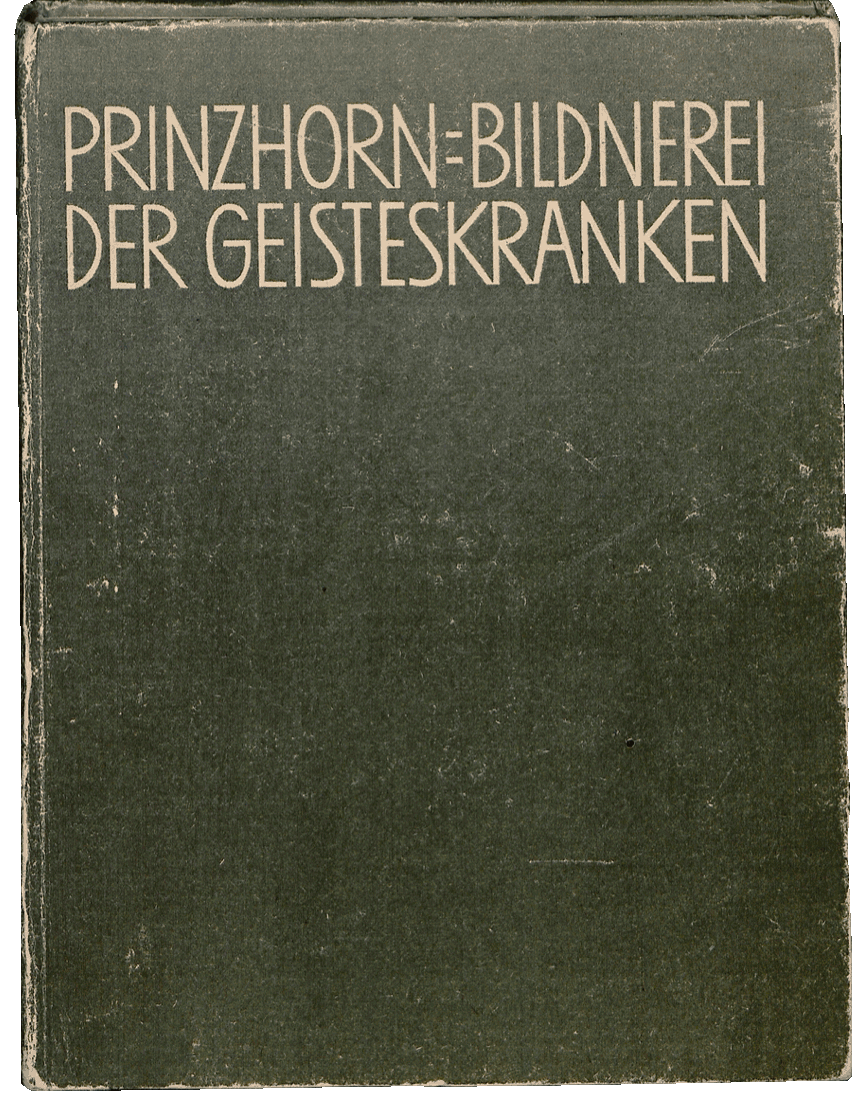
Cet essai sera traduit en français sous le titre Expressions de la folie : Dessins, peintures, sculptures d'asile.
Author
Hans Prinzhorn
Date
1922
Medium
Essay
Reference
Julius Springer, Berlin
Adolf Wölfli devant le paravent pour le Dr. Oscar Forel
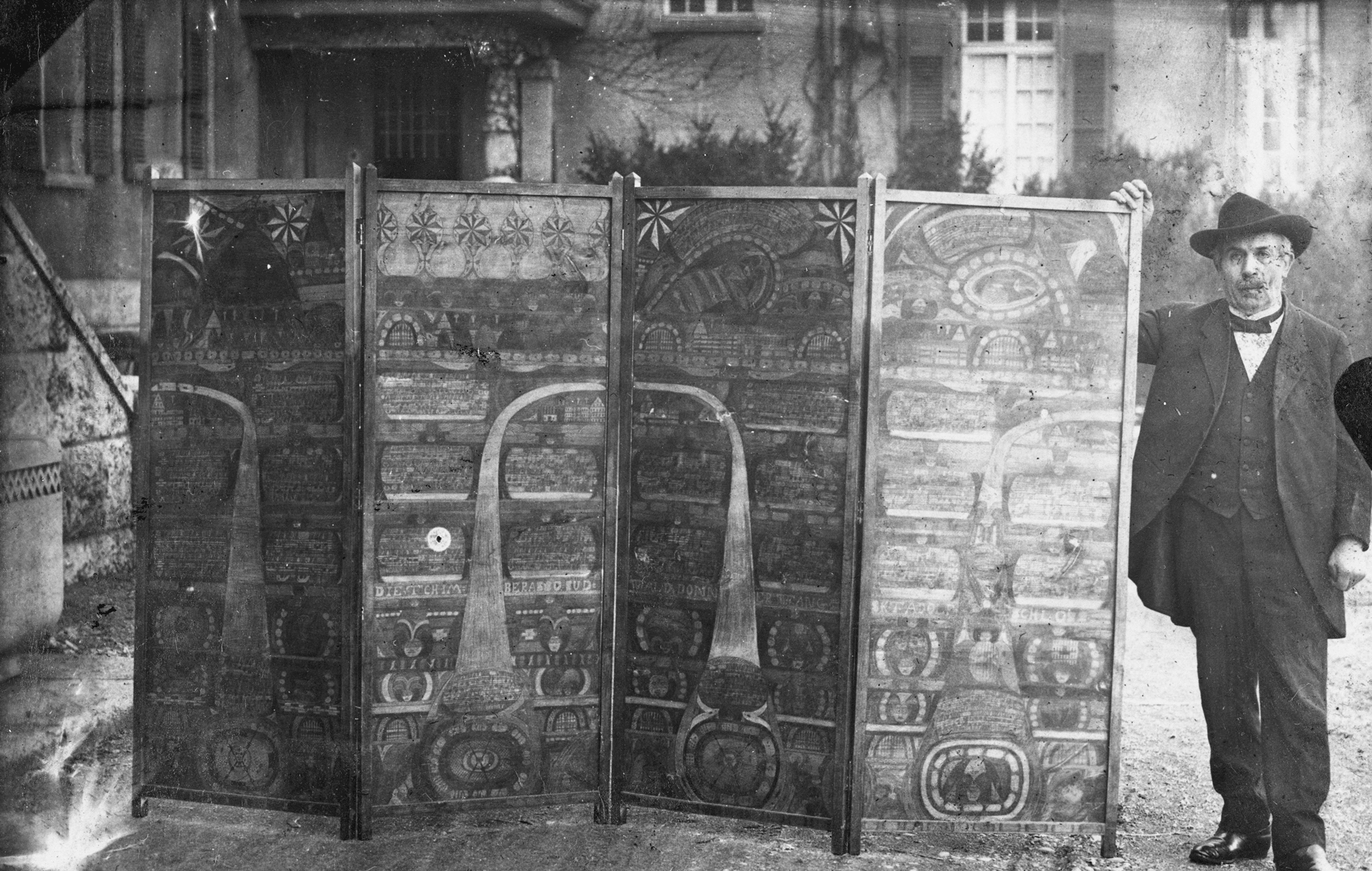
Date
1922
Medium
Photography
Technique
Silver, black and white
Place of conservation
Adolf Wölfli Stiftung
Credits
Adolf Wölfli Stiftung, Kunstmuseum Bern
Lettre de Jean Dubuffet à Walter Morgenthaler
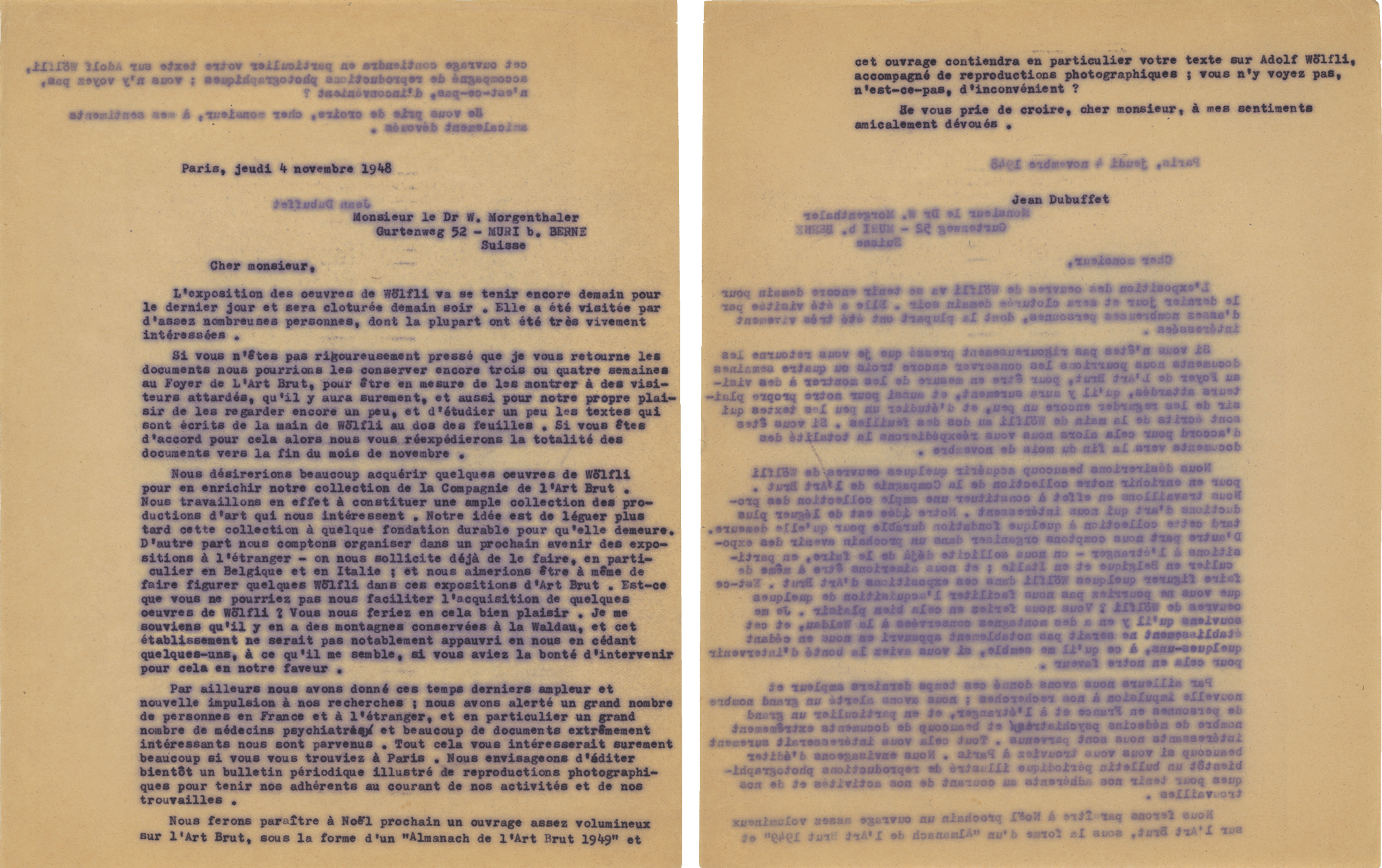
Author
Jean Dubuffet
Date
1948
Medium
Correspondence
Place of conservation
Collection de l'Art Brut
Lettre de Jean Dubuffet à Walter Morgenthaler
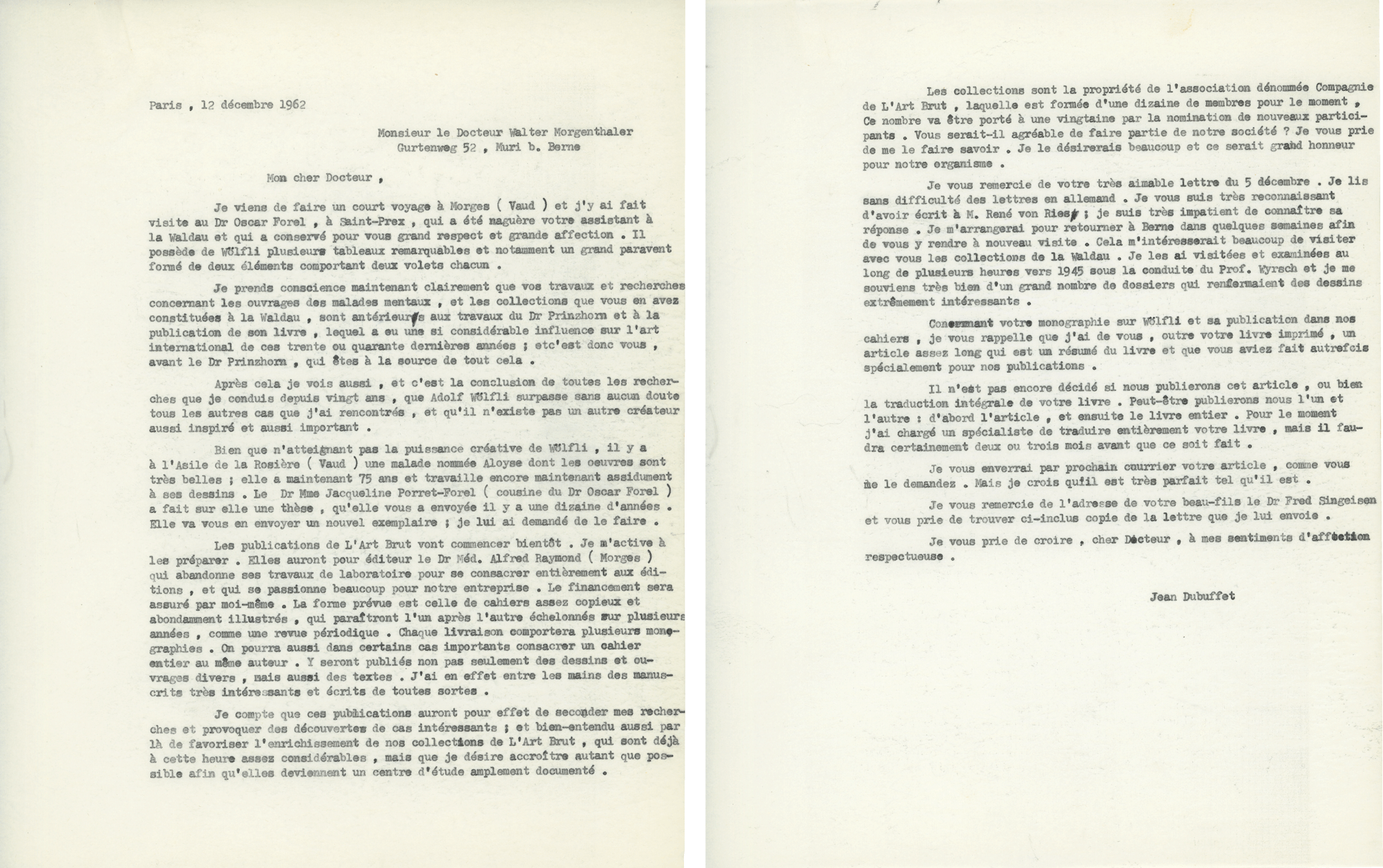
Author
Jean Dubuffet
Date
1962
Medium
Correspondence
Place of conservation
Collection de l'Art Brut
Lettre d’Oscar Forel à Jean Dubuffet
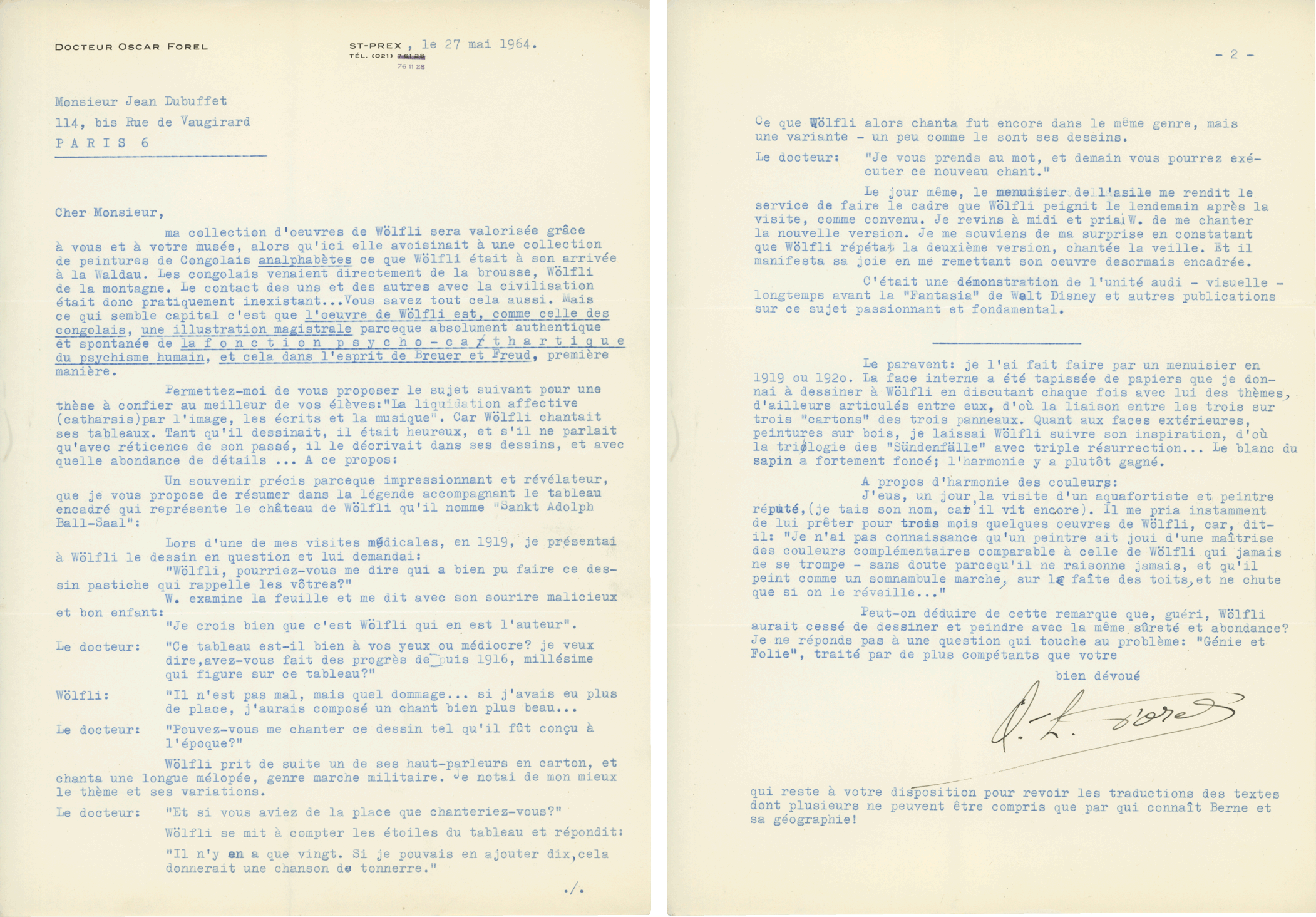
Author
Oscar Forel
Date
1964
Medium
Correspondence
Place of conservation
Collection de l'Art Brut
Adolphe Wölfli 1864-1930. Un artiste qui se révèle au cours de son aliénation mentale
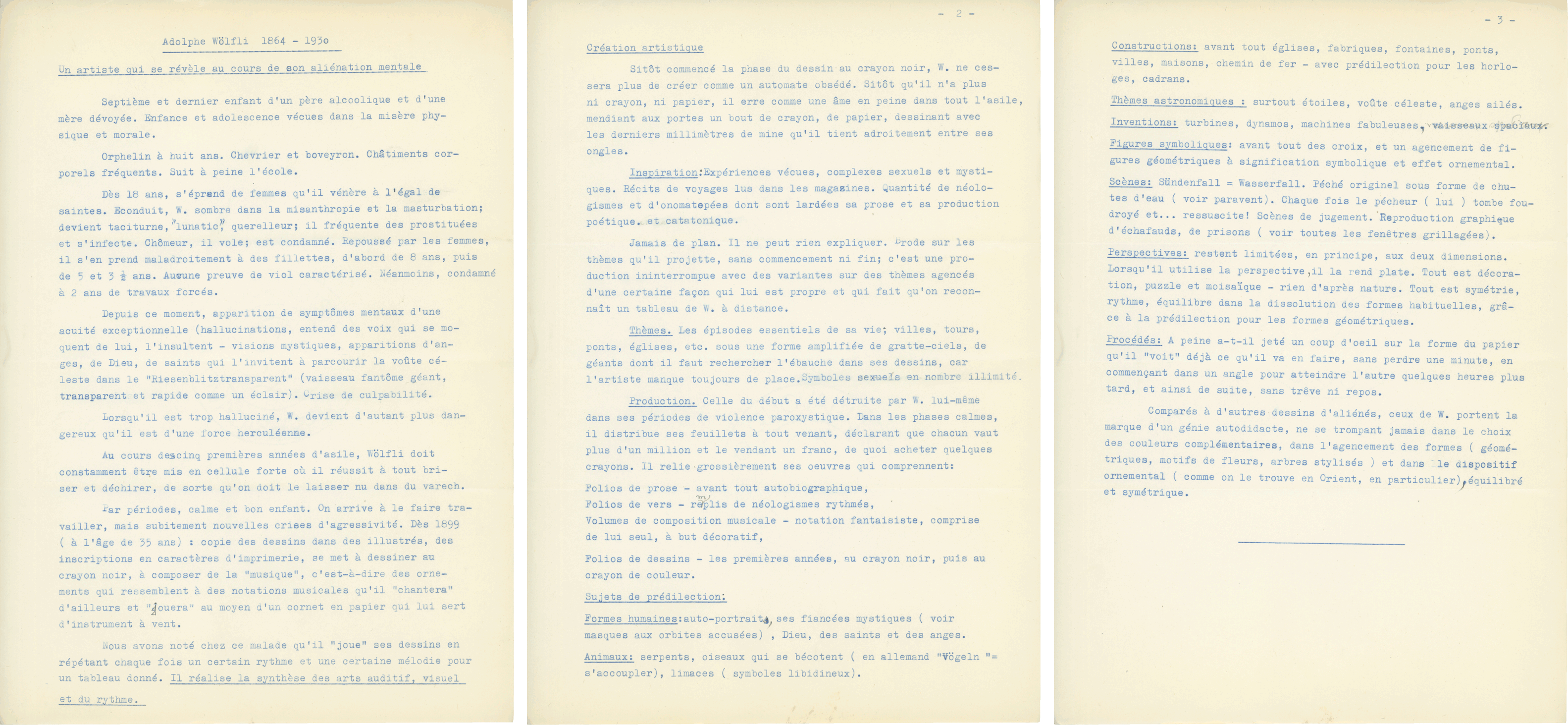
Notes du psychiatre Oscar Forel sur la vie, la maladie et la création artistique d'Adolf Wölfli, prises à l'hôpital de la Waldau et transmises à Jean Dubuffet le 2 juin 1964.
Author
Oscar Forel
Date
1964
Medium
Typescript
Place of conservation
Collection de l'Art Brut
Blaise Cendrars
(1887 - 1961)
- 1887: Frédéric-Louis Sauser, the future Blaise Cendrars, is born at rue de la Paix 27, La Chaux-de-Fonds. He is the youngest of three siblings.
- 1894-1897: The family stays at Naples where Freddy attends the Scuola Internazionale, before moving to Basel, where his father, Georges Sauser, has unreliable financial plans.
- 1902: Back in Switzerland, Freddy enters the École supérieure de commerce in Neuchâtel. But his attendance is poor and his results mediocre.
- 1904-1907: An advertisement prompts Freddy to leave for Russia, where a fellow watchmaker is looking for a clerk. He manages to convince his parents and leaves first for Moscow, then for St. Petersburg, where he is employed by Mr. Leuba. But the working conditions do not suit him, and he resigns.
- 1907: Back in Switzerland, Freddy attends classes as a free listener at the University of Bern and claims to be preparing for his maturité (Swiss baccalaureate). He writes his first known poem, Paysage. During this period, Freddy is psychologically fragile, as evidenced by his correspondence with his brother Georges Sauser.
- 1908-1909: Scattered studies at university (medicine, literature, art history). He reads a great deal of everything: philosophy, history of science, Latin patrology, … In spring, he meets two young Russian-Polish girls. Initially attracted to Bella Bender, he became involved with Félicie (Féla) Poznanska, the mother of his three children.
- 1910: Ill, he travels with Féla to La Panne, near Ostend, for sea bathing. Neuralgia and vertigo prevent him from working. In Russia, he was already being treated by a regime of hot and cold baths, massages, and electricity. In October, he travels to Paris, where he meets up again with the sculptor August Suter, a Basel primary school pupil like himself.
- 1911: Frederic leaves for New York to join Féla, who teaches at the Ferrer School. He writes Hic, Haec, Hoc, the first New York notes signed with a new name: “Blaise Cendrart.” On his brother’s advice, he changes the final t to an s.
- 1912: American life repels Cendrars: “An even more inhuman, mercantile, mechanical Switzerland…” (Séjour à New York). Adopting Gérard de Nerval’s phrase, he writes “I am the other!” under a self-portrait. Returning to Paris in the summer, he founds the magazine Les Hommes nouveaux with Emil Szittya and publishes his first major poem, Les Pâques à New York (Easter in New York) signed under his definitive pseudonym, “Blaise Cendrars”. During this period, he makes the acquaintance of Guillaume Apollinaire and the Parisian avant-garde.
- 1913: Publication of the Prose du Transsibérien et de la Petite Jehanne de France (Prose of the Trans Siberian and of little Jehanne de France), “the first simultaneous book”, with gouaches by Sonia Delaunay. Production of Panama ou les Aventures de mes sept oncles (Panama or the adventures of my seven uncles), a poem which only appears in 1918. Féla returns from New York.
- 1914-1915: Frédéric Louis Sauser joins the Foreign Legion to serve France during the First World War. His military record book indicates, as an observation: “folie d’après la fiche” (“madness according to the record”). Frédéric Sauser therefore experiences psychological difficulties around 1910. He marries Féla before leaving for the front. She gives him two sons, Odilon in 1914 and Rémy in 1916. During a battle in Champagne on the 28th of September 1915, he loses his right arm, his writing hand.
- 1916: Frédéric Sauser becomes a naturalised French citizen. In the same year he publishes La Guerre au Luxembourg (The War in the Luxemburg).
- 1917: A year of intense creative activity. Cendrars works on La fin du monde, a “Martian novel” project from which will emerge Profond aujourd’hui (1917), La Fin du Monde filmée par l’Ange Notre-Dame (1919) and Moravagine(1926). He meets and falls in love with Raymone Duchâteau, a young actress. They would marry many years later.
- 1918: Publication of J’ai tué (I’ve killed). He became involved with Paul Lafitte’s Editions de la Sirène.
- 1919: Publication of the poetry collection Dix-neuf poèmes élastiques (Nineteen elastic poems) and L’ABC du Cinéma. Cendrars decides to live alone. Féla leaves France with their two sons to join one of her sisters in London, where Miriam Cendrars is born.
- 1920-1921: Frédéric Sauser takes part in the filming of Abel Gance’s La Roue (The Wheel). He himself wants to direct a film, La Vénus noire, but the project is a failure.
- 1921: At Editions de la Sirène, he publishes Anthologie nègre, collection of African tales.
- 1923: Based on a libretto by Cendrars, the Swedish ballets produce La Création du monde, music by Darius Milhaud, sets and costumes by Fernand Léger.
- 1924: First trip to Brazil, at the invitation of his friend and patron, Paul Prado. Aboard the Formose, he copies Moravagine onto his new Remington and writes Feuilles de route. The voyage was a way of distancing himself from the Parisian literary circles.
- 1925: L’Or, la merveilleuse histoire du Général Johann August Suter (Gold, the Marvelous story of General Johann August Suter), his first book to achieve international success, is published on his return from Brazil.
- 1926: The novel Moravagine is published by Grasset after more than ten years of maturation. L’Eubage, aux antipodes de l’Unité is also published.
- 1929: Publication of Le Plan de l’Aiguille and Les Confessions de Dan Yack (Confessions of Dan Yack). Cendrars lives in Paris or isolates himself in his “country house” in Tremblay-sur-Mauldre.
- 1930-1935: Cendrars is now known as a great reporter. He publishes several collections of short stories, adapted from his reports, including Histoires vraies (1938) and La Vie dangereuse (1939).
- 1940: After the Armistice, he leaves Paris and settles in Aix-en-Provence, where he stops writing. He will not return to writing until 1943.
- 1943-1949: Years of intense creative activity, during which Cendrars writes four volumes of “Memoirs which are not Memoirs”: L’Homme foudroyé (1945) (The astonished man), La Main coupée (1946) (The Bloody hand), Bourlinguer (1948) (Lice), Le Lotissement du ciel (1949) (Sky). On the 27th of October 1949, he marries Raymone Duchâteau at Sigriswil (Bernese Oberland, Switzerland).
- 1956-1958: Publication of Emmène-moi au bout du monde !... (To the End of the world), his last novel. The same year, a heart attack leaves him very weak. In 1958, a second attack leaves him aphasic.
- 1960: He is named Commander of the Legion of Honour, an award presented by André Malraux.
- 1961: Blaise Cendrars dies on the 21st of January 1961, at the age of 74 years.
- 1954: André Malraux observes that this “great poet” remains “distractedly recognised”. The myth that Cendrars had constructed around his life and his disdain in literary circles undoubtedly contributed to his oversight. But critical work has since been able to valorise his work and its importance in the literary history of the 20th century.
- 1960-1965: Publication of the first Complete Works, by Editions Denoël.
- 1978: Creation of the Association Internationale Blaise Cendrars (AIBC).
- 1981: Inaugural symposium on the work of Blaise Cendrars at the University of Paris Nanterre.
- 1983: Creation of the Centre d’Études Blaise Cendrars (CEBC) following the arrival of the writer’s archives, the Fonds Blaise Cendrars, at the Swiss Literary Archives of the National Library in Bern.
- 2013-2017: Publication of the Œuvres autobiographiques (2013), followed by the Poésie complète and Romans (2017) in the prestigious Bibliothèque de la Pléiade, published by Gallimard.
Marie-Louise Sauser

Date
1878
Medium
Photography
Technique
Silver, black and white
Place of conservation
Bibliothèque nationale suisse
Cote
Cendrars D-1/2 PO
Georges Sauser
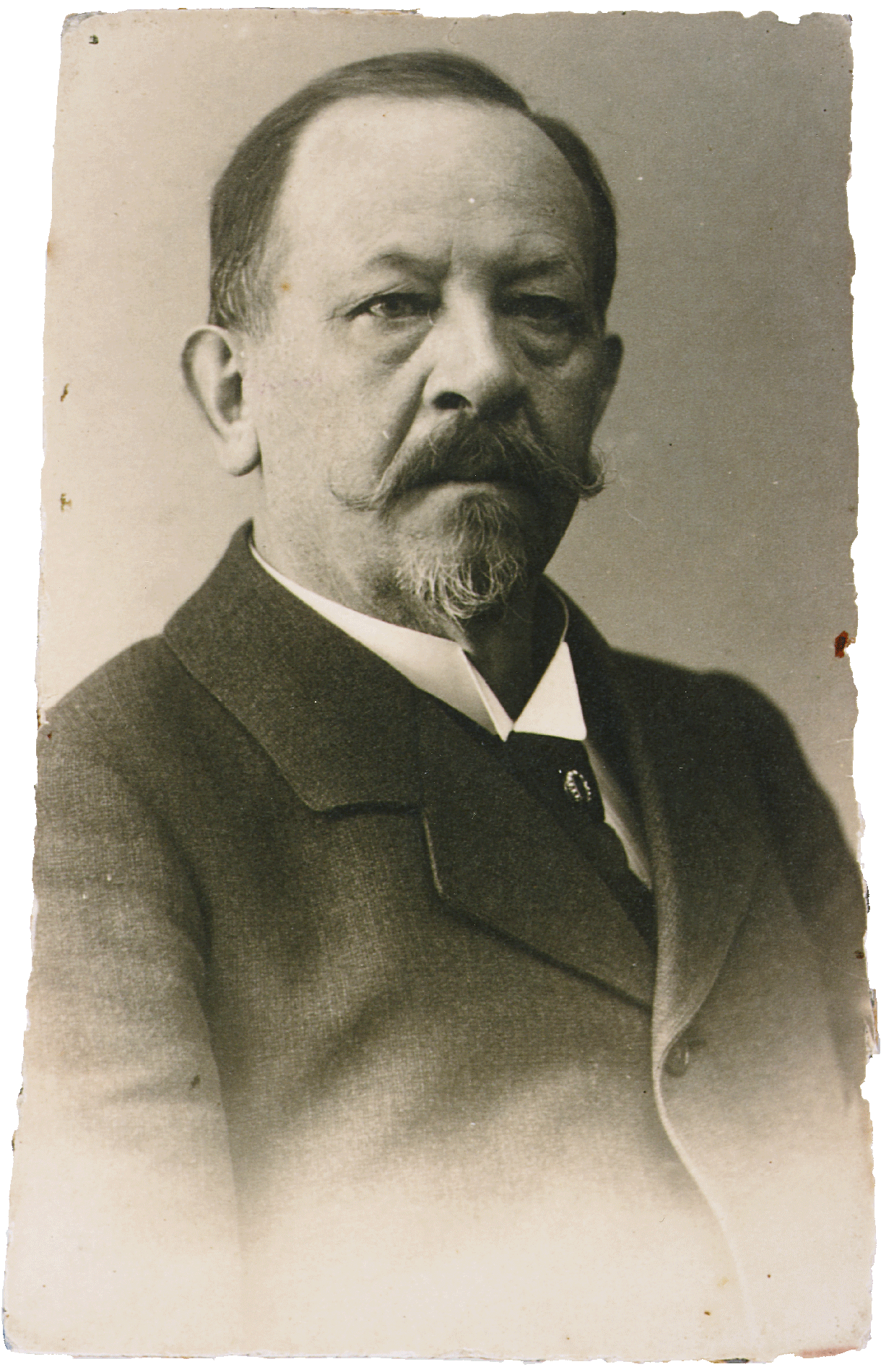
Date
sans date
Medium
Photography
Technique
Silver, black and white
Place of conservation
Bibliothèque nationale suisse
Cote
D 5/ 86 PR
Blaise Cendrars enfant, Scuola Internationale

Date
1895
Medium
Photography
Place of conservation
Bibliothèque nationale suisse
Cote
Cendrars D-1/4a PO
Blaise Cendrars en Russie
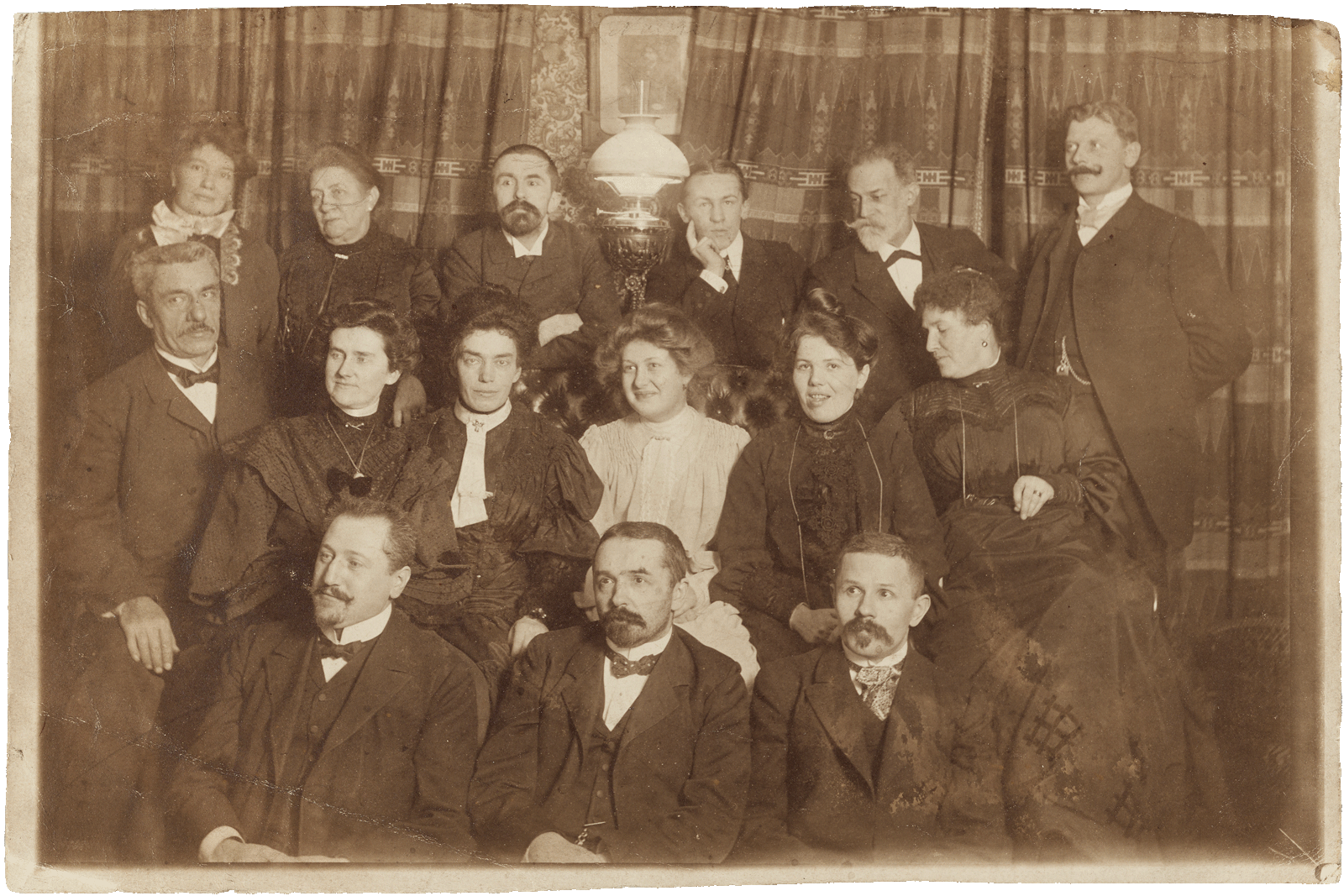
Frédéric Sauser se rend en Russie en 1904 afin d’effectuer un apprentissage en horlogerie. Le jeune homme est installé à Saint-Pétersbourg depuis peu lorsqu’éclate la révolution en 1905. Il se trouve donc aux premières loges de cette période troublée de l’histoire.
Date
1904
Medium
Photography
Technique
Silver, sepia
Place of conservation
Bibliothèque nationale suisse
Cote
Cendrars D-1/7 PO
Blaise Cendrars à l'école de commerce

Date
1904
Medium
Photography
Place of conservation
Bibliothèque nationale suisse
Cote
Cendrars D-1/6 PO
